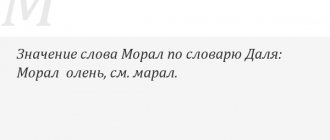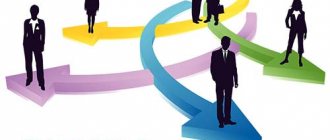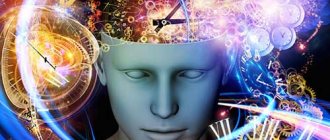Approaches to the Study of Morality
Naturalistic - comes from the complication of group feelings, ensures the survivability of the species in nature. Naturalists do not distinguish between the social and the biological; it is combined; there is no boundary between human and animal consciousness.
Religious-idealistic – God endowed humanity with morality.
Sociological - morality arises as a result of collective work activity and communication. The more complex social relationships, the higher the morality.
There are 3 moral foundations put forward:
- Traditions, customs and mores are the cultural characteristics of a particular ethnic group (people). With the help of socialization, the customs and norms of a given society are assimilated, which become a habit that shapes the personal side of a person. As a result, all actions will be of the nature of “this is how it is accepted” or “this is not accepted.”
- Public opinion is the regulation of norms of behavior through the approval or condemnation of other individuals in society. The reward for compliance with moral standards is honor, respect, recognition, and for violations - shame, isolation.
- Personal consciousness is the consistency of personal and social interests. Conscience is the main regulator of behavior. Morality appears to be a form of self-regulation, being selfless and personal. The choice of actions is characterized by voluntariness.
Moral consciousness is the ideal of moral behavior in a particular society, which does not go beyond the boundaries of the ethnic group.
Moral norm - has a formative effect on the moral beliefs of the individual: self-improvement, honesty, courage, struggle for truth.
A moral norm is options for a person’s everyday behavior: which actions are acceptable in society and which are not.
Imperativeness is a property of moral norms. Expresses the meaning of the norm, since in one case a prohibition is allowed, and in another, positivity is attributed. For example: “don’t lie.” A set of norms is determined by a moral code.
- In addition, the code includes value orientations:
- Characteristics of personality actions;
- The virtues of the individual, team, society;
- Characteristics of public institutions;
- Value concepts
- Categories of morality - good and evil, justice.
Motivation, assessment, self-esteem - a regulator of social behavior. Motive encourages moral activity in order to satisfy the needs of the individual. Motivation is a complex of motives responsible for the priority of an individual’s values and goals.
Moral assessment – gives a value assessment of an individual’s actions and behavior depending on existing norms and values in society.
Conscience is moral self-control, expressed in the formulation of rules of behavior, their implementation and evaluation of actions.
Debt is how an individual relates to society.
Children's room
I had to look through “Age Psychology” by Kulagina. And I came across it at Kohlberg’s stage of moral development . The quote is complete, without gaps and without “cutting off” at the end:
L. Kohlberg considers the development of moral consciousness as a consistent progressive process. Having summarized extensive experimental material, he identifies 6 stages of development, combined into three levels.
I./ The first is the pre-moral level. Moral standards for a child are something external; he follows the rules established by adults for purely selfish reasons.
- Initially, he focuses on punishment and behaves “good” in order to avoid it (stage 1).
- Then he begins to focus on encouragement, expecting to receive praise or some other reward for his correct actions (stage 2).
II./ The second level is conventional morality. The source of moral instructions for the child remains external. But he already strives to behave in a certain way out of a need for approval, to maintain good relationships with people who are significant to him.
- Orientation in one’s behavior towards meeting expectations and approval of others is characteristic of stage 3.
- for authority - for stage 4.
This determines the instability of the child’s behavior and dependence on external influences.
Here I’ll just insert a couple of words, because the difference is not very clear.
The third stage has the informal name “specific others,” that is, when the behavior must be approved by the father, the teacher, or Galya and Katya, fitness friends.
The fourth stage is no longer specific others, but a certain group or layer of people in general: “pioneers must” or “accepted in our circle.” Under “authority,” the author of the textbook encrypted certain moral rules, the bearer of which is not someone specific, but “general rules for the group to which I consider myself.” We continue to quote:
III./Third level - autonomous morality. Moral norms and principles become the personal property of the individual, i.e. internal. Actions are determined not by external pressure or authority, but by one’s conscience: “I stand on this and cannot do otherwise.”
- First, an orientation towards the principles of public well-being, democratic laws, and assumed obligations to society appears (stage 5),
- then - on universal ethical principles (stage 6).
All preschoolers and most seven-year-old children ... are at the premoral level of development. ... By the age of 13, many children solve moral problems at the second level; they are characterized by conventional morality. The development of a higher level of moral consciousness is associated with the development of intelligence: conscious moral principles cannot appear before adolescence, when logical thinking is formed. However, the formation of formal logical operations is not enough; even intellectually developed adults may lack autonomous morality. As for teenagers, only 10% of them rise to the highest level of moral consciousness.
It's clear? Hope so. It's not difficult to understand:
Everything is correct, but, unfortunately, the main thing has slipped away. The highlight of Kohlberg's theory, for my taste. What sets her apart from all others and makes her the most “believable”, if you like. 
Kulagina’s “morality” looks like a six-step slide, a staircase. (It is no coincidence that I did NOT draw this slide, you will soon understand why). If you imagine a child at the foot of this hill, then you just want to say: now let’s start climbing to the top. While we are here... at zero. A-MORAL. There is no morality. But when we get to at least the fourth step... Here we will already have conventional morality, a decently educated person. Oga. And on the fifth or sixth - finally, a highly moral type!
This is because we and Kohlberg view the word “morality” differently. We are accustomed to the fact that if there is MORALITY, it is good, but when it is not there, we get an AMORAL type, that is, one who DOES NOT OBSERVE ANY MORALITY.
But Kohlberg says something else. According to Kohlberg, MORALITY is a WAY FOR SOLVING ETHICAL PROBLEMS . This is a tool - more or less complex, more or less accurate, but just a tool. On the lower levels there is a children's pedal car, on the upper levels there is a Ferrari. But where it goes depends on the driver...
Let's start with the first step. If you steal money from guests, will dad get angry? Yyyy, so it depends on what kind of dad!!!!! There is a dad who will get angry if you DO NOT steal... What happens? It turns out that Kolya and Sasha are AT THE SAME LEVEL OF MORALITY (“to avoid punishment”), but one categorically does not steal money, and the other categorically always steals, otherwise dad will beat you...
Further. We will deserve praise. Colin’s dad praises Kolya if Kolya beats everyone around “so that they are afraid” (the film “From the Life of the Chief of the Criminal Investigation Department” is in your hands), and Sasha’s dad praises Sasha if the teacher doesn’t complain about him, so it would be better not to fight...
The third stage is generally fatal. Have you heard the expression “bad company”? Do you think she doesn’t allow you to climb this “ladder”? And how it gives!!!! Better than a good one. In prepuberty, a child begins to be more interested in the opinions of peers and friends than their parents. And here you go, the conventional morality of the bully Vovka and his friend Petka: “smoking, taking money from first-graders, only nerds study, all girls are an indecent word.”
Once upon a time, my first teacher brought all the children of scientists into our first “b” class. This gave an absolutely amazing effect: among us, for many years, the one who was SMARTER was considered BETTER. In any case, until puberty with his first romantic relationships, when appearance began to play a role, and smart people were replaced by handsome men. What was it?
This gave an absolutely amazing effect: among us, for many years, the one who was SMARTER was considered BETTER. In any case, until puberty with his first romantic relationships, when appearance began to play a role, and smart people were replaced by handsome men. What was it? This was conventional morality at the “specific others” level. In the sports class... well, you get the idea. There, most likely, they would measure their biceps... In elite schools - whose dad is cooler. And so on.
This was conventional morality at the “specific others” level. In the sports class... well, you get the idea. There, most likely, they would measure their biceps... In elite schools - whose dad is cooler. And so on.
The third stage is a terrible trap.
Firstly, because the methods of praise and punishment familiar to parents stop working from the word “generally.” That's it, we've outgrown this!!!! “It’s better to die standing than to live on your knees!!!!” We are a social being with conventional morality, and this convention is NOT YOURS, dear parents!!!!! Remember Pavlik Morozov, he was just at the third stage of morality, and his reference group - his “concrete others” - taught him where to put such parents and such a family...
Smart parents, at the cost of much effort, usually manage to remain a reference group for their growing child. But no one else in our difficult times (and glory to God!) has managed to remain the ONLY reference group for the child. Many parents, intuitively anticipating problems, try to prevent them by creating a “microclub” of their children with suitable attitudes. Great idea, by the way. It's good if it works. If you can’t, you need to dig around: a good school or class, clubs, whatever. “Your job is to organize the meeting.” Maybe it will shoot...
But even if he shoots, there will be no peace. Because, secondly, the morality of the third stage is INCREDIBLY UNSTABLE, just as our social contacts and informal groups around us are unstable. Have you moved? Does your child have new neighbors and classmates? He fell in love? – there is no guarantee that the previous settings will be maintained.
And considering that many, many tend to get “stuck” at the third-conventional level and no longer grow...
I have a friend like this. She grew up in a large Soviet city, in a very (even too) wealthy and very (even too) prosperous family. And she was always a GOOD GIRL. Her parents managed to remain the most authoritative reference group for her, and she did not disappoint their expectations in any way: she went to school on time, married the right person on time, gave them a grandson on time, was beautiful, was obedient, was well-groomed... And suddenly the USSR collapsed ... Our heroine woke up in Israel in a cheap rented apartment, no one knew her, her parents died, her husband worked at a construction site, and she washed floors in a bank. The heroine was a bright and outgoing young woman. She immediately found a new reference group in the person of the poorly educated ladies of the demimonde who lived next door, and COMPLETELY (radically, polarly... find the epithet yourself) changed her lifestyle. Nothing good came of this, her family fell apart, and she herself quickly realized that she had made a mistake... But it was too late.
This is the third stage of moral development. "Specific others." It would be good if it were “who needs a leg” (c), in the sense that those who need others….
However, there is another side to this instability. If at this stage you notice trouble and promptly “transplant” the child to another soil, dramatically change the environment of communication around him, there is a chance to change the moral course.
At the fourth stage it becomes more difficult. It is more stable. If a person has crawled to the fourth level, there is no longer any need to be afraid of such sharp jumps. It plays a role here to which, in a broad sense, community the character considers himself to be, the morality of which layer or which group he considers his morality. “Nerds” will study, “glamorous divas” will chase oligarchs, “real men” will drink vodka and make male friends, and so on. Morality varies for each group, and the morality of “decent people”, which is described by the Ten Commandments, and which we, in fact, are accustomed to calling “MORAL”, is far from the only one. For example, Kostya the Brick from “The Meeting Place Cannot Be Changed” solves ethical problems within the framework of the attitudes of this stage of moral development:
“I don’t know how it is in your prison, but here... if you ask too many questions, they’ll cut out your tongue...”
“With us” is the authoritative morality of the criminal world, the group to which Brick considers himself to belong. He is not so afraid that “his tongue will be cut out,” as what follows shows: he behaves precisely in accordance with the morality of the average criminal, who considers it possible to compromise with the authorities in order to benefit himself. If a citizen has already been carried so far, and he does not need “specific others” to associate himself with any moral standards, it is much, much more difficult to reorient him.
And then...
Here is Ruchechnik from the same movie: “I am a thief in law, and I have not betrayed my friends...” This is “accepted obligations to society,” the fifth stage.
the fifth stage. High level of moral development. If he, with such a level of processing of ethical information, were not a thief, but a leader in production, we could call him a highly moral person. His morality has grown into his personality, they can no longer be separated from each other...
High level of moral development. If he, with such a level of processing of ethical information, were not a thief, but a leader in production, we could call him a highly moral person. His morality has grown into his personality, they can no longer be separated from each other...
Here is the highlight: the one who acts, in our opinion, RIGHT and WELL (we say: MORALLY), does not always act from HIGH (corresponding to high stages) moral considerations. AND VICE VERSA.
I once gave students the following problem as a test exercise.
In Jerusalem, in glass stands at bus stops, advertisements for underwear were placed with a picture of a beautiful negligee girl. Unknown hooligans began breaking windows and destroying advertising posters. The hooligans were detained by two police officers who went to work at night for this purpose, although they were not obliged to do so. The hooligans turned out to be two students of an ultra-Orthodox yeshiva (Jewish religious school).
All four participants in the events were asked why they did what they did. Determine from the answers at what stage of moral development each participant stands.
Answers : Policeman A: - The police believe that if you haven’t caught him, then you’re doing a bad job. I had to catch the hooligans like a normal policeman. Policeman B: “I was long overdue for a promotion, I needed to stand out, so I went out at night.” Hooligan S: - I knew that I was breaking the law, but I could not look at this abomination. My conscience would not allow me to go through and leave these vile posters hanging for our children to look at... Hooligan D: - My rabbi, my spiritual teacher, said that these posters are an abomination. I immediately understood what needed to be done!
What can be said here about the servants of the law, and what about its violators?
- Policeman A responds within the framework of stage four morality: he considers himself a normal (good) policeman, and behaves as a policeman should behave in his opinion.
- Policeman B is just seeking encouragement and promotion; this is the second stage of moral development, completely childish.
- Hooligan D went to destroy the advertisement for reasons of the third stage of moral development: he focused on the rabbi as that “specific other” who is the legislator of morality.
- As for the bully S, he outstripped them all! His action is dictated by an internal code, conscience, morality, rooted in the personality and merged with it. This is the SIXTH stage of moral development, the highest and final...
Conclusion. Moral development has NO SIGN, it does not go from zero uphill to shining heights, but freely chooses a direction. Its mechanisms become more complex and grow into the personality, and it becomes more and more difficult to separate one from the other.
This is not arithmetic, when at any moment you can start from scratch: “we don’t know how to add and subtract, that is, we don’t know arithmetic, if we teach it, it will be arithmetic.” If a child steals, begs and beats the weak, he does not have NO MORALITY - his morality has DIFFERENT CONTENT, it developed, perhaps for a long time, with a different sign, and the success of “re-education” will depend on how far the child has gone up the ladder of levels , how firmly have morality and personality structure managed to adhere...
If this is already a conventional morality, it is impossible to return a person back up the ladder of levels. It is impossible to achieve correct behavior with punishments and rewards from someone who is guided by the environment or authorities. The structures of moral mechanisms have already been created, and the only chance to change something is to REPLACE THE CONTENT OF MORALITY: give a person a different reference group, a different environment - if, fortunately, he has not yet “fused” the content of his morality with his personality...
Remember this. And don't miss it :).
Functions of morality
| Function | Content |
| Worldview | – morality forms value orientations: norms, assessments, prohibitions that are carried out by individuals in society. |
| Cognitive | – gives the individual information about the cultural environment of a particular society. |
| Regulatory | – morality regulates people’s daily lives: in communication, everyday life, at work. Imposes sanctions and maintains rules of conduct. Public opinion is the force. |
| Estimated | – phenomena and processes in the world are considered through a humanistic approach. Allows you to distinguish between good and evil and derivative concepts (justice, honesty). Moral assessment is expressed in praise, blame, agreement, etc. |
| Educational | – ensures the transmission of values and norms from generation to generation. |
| Motivational | – human behavior is motivated by moral principles, encouraging one to do or not do something. |
| Controlling | - control of the individual himself, based on the condemnation of others or conscience. |
| Coordination | – interaction of people in different circumstances. |
| Integrating | – the unity of society and the integrity of the inner world of man. |
Moral requirements
- Rules of conduct (give way to elders, do not lie, etc.)
- Moral qualities (honesty, compassion, justice)
- Moral principles (altruism)
- Psychological mechanisms (conscience)
- Moral values (kindness, happiness, etc.)
- Moral culture is the extent to which an individual perceives the norms and values of the society in which he lives.
Morality is the confrontation between good and evil. Good is understood as a person’s attraction to maintaining interpersonal relationships and achieving perfection. Good is creative in nature, and evil is destructive (destroys social relations and personality from the inside)
Moral choice is the degree of freedom between choosing good and evil. The individual is responsible for the consequences not only to society, but also to himself.
Introduction
In society there are many rules, customs, norms, and principles that guide people in relation to each other and society as a whole. Some of these rules must be complied with. They are recorded in special laws issued by government authorities. The state can force them to comply. These are legal norms, laws and other normative acts, but all of them cannot cover the entire range of human relationships. There are still many aspects of human communication that cannot be regulated by force of law, forcibly. All rules, customs, principles that guide people in their relationships with each other and in relation to society and which are supported by public opinion are called morality or ethics, which is equivalent.
The basis of morality (ethics) are the commandments created many centuries ago, which set out the basic criteria of moral norms and rules, but each time period makes its own adjustments to the structures and functions of morality.
The purpose of my work is to consider morality as a whole, to study its structure and functions. My work is based on the book by Zelenkova I.L. “Ethics” in which information about morality is most fully presented. The book by Apresyan R.G. was no less useful for me. "The Idea of Morality".









